| You are at Toxics Alert > Feature > Climate change triggering extinction of species | |||
 |
 |
||
|
Subscribe || Tell a Friend || Print View | ||
| Home | Editorial | Feature | Interview | News | Policy | Updates | Reports / International News | Partner | |||
|
Climate change triggering extinction of speciesSource: Wikipedia,Nature,Science,Telegraph, Date: , 2009According to the most comprehensive study done so far in this field, over a million species will be lost in the coming 50 years. The most important cause was found to be climate change. In biology and ecology, extinction is the death of every member of a species or group of taxa. The moment of extinction is generally considered to be the death of the last individual of that species (although the capacity to breed and recover may have been lost before this point). Because a species' potential range may be very large, determining this moment is difficult, and is usually done retrospectively. This difficulty leads to phenomena such as Lazarus taxa, where a species presumed extinct abruptly "re-appears" (typically in the fossil record) after a period of apparent absence. A 2004 report titled "Mass Extinctions In Peru Due To Climate Change" by Kate Melville states that the new century may bring hundreds or even thousands of plant and animal extinctions to the Andes Mountains of Peru. This report is based on researches by Florida Institute of Technology Paleo-Ecologist Mark Bush. Bush's findings, chronicled in the journal Science, result from the study of the first continuous record of Andean climate change during the past 48,000 years.The Andes region of Peru is one of the most biologically diverse areas on the planet. According to the report Bush predicts that species that can migrate readily, such as birds and butterflies, may be the least affected, whereas species that are less mobile will be vulnerable to extinction.  King pegiuns too face extinction due to climate change.Second only to Emperor penguins in size, King Penguins - distinguished by their ear patches of bright golden-orange feathers - thrive on the islands at the northern reaches of Antarctica, with a total population of over two million breeding pairs. King pegiuns too face extinction due to climate change.Second only to Emperor penguins in size, King Penguins - distinguished by their ear patches of bright golden-orange feathers - thrive on the islands at the northern reaches of Antarctica, with a total population of over two million breeding pairs.Because King penguins sit on the food chain in their region, they are sensitive indicators of alterations to the marine ecosystem and feel the effects of climate change more keenly as a result - in this case, the warming is reducing their food supply.Global warming is happening much more quickly in some parts of the frozen continent, particularly the north-west area known as the Antarctic Peninsula, where in the last 50 years temperatures have risen by about 2.5ºC - as much as five times the world average . But for these penguins, which do not live near the peninsula, the effects are caused by a warming of sub polar sea surface temperatures.The birds feed on small fish and squid, relying less on krill and other small crustaceans than many other sea mammals, and the find suggests that these species are suffering as a result of warming of the Southern Ocean. Using a mathematical model, the scientists calculate that there will be a nine per cent decline in the adult penguin population for every 0.26ºC of sea surface warming, suggesting that this population is at high risk under current global warming conditions, which predict an average increase of 0.2ºC per decade for the next two decades.They conclude that there is a "heavy extinction risk" given current global warming predictions of a 0.4ºC rise over two decades, which cuts the chance of survival from 95 per cent to 80 per cent. A recent report by the environmental conservation group WWF is warning that rising temperatures and the resulting loss of sea ice is robbing other species of the emblematic birds of the nesting grounds they need to breed successfully while lading a reduction in the availability of krill which they rely on for food. Climate change threatens a million species with extinction.A study published in “Nature” says that Climate change may drive a quarter of land animals and plants to extinction. Scientists studied six biodiversity-rich regions around the world representing 20% of the planet’s land area. They projected the future distributions of 1103 plants, mammals, birds, reptiles, frogs, butterflies and other invertebrates. The study employed computer models to simulate the ways species’ ranges are expected to move in response to changing temperatures and climatic conditions.Three different climate change scenarios were considered – minimum, mid-range and maximum expected climate change using data supplied by the Intergovernmental Panel on Climate Change. The ability of animals and plants to move to new areas was also considered, using two alternatives; one where species could not spread at all, the other assuming “unlimited” or successful movement. As per the findings if the projections can be extrapolated globally, and to other groups of land animals and plants, our analyses suggest that well over a million species could be threatened with extinction as a result of climate change. Increases in temperature can force a species to move toward its preferred, usually cooler, climate range. If habitat destruction has already altered those habitats, the species will have no safe haven. In some cases we found that there will no longer be anywhere climatically suitable for these species to live; in other cases they may be unable to reach distant regions where the climate will be suitable. Other species are expected to survive in much reduced areas, where they may then be at risk from other threats. These forecasts are for species predicted to go extinct eventually based on the climate change that will occur between now and 2050. However, as some species respond slowly to environmental change, many of the species that may be doomed to eventual extinction will not actually have become extinct by 2050. A new global study concludes that 90 percent of all large fishes have disappeared from the world’s oceans in the past half century, the devastating result of industrial fishing. The study, which took 10 years to complete and was published in the international journal Nature, paints a grim picture of the Earth’s current populations of such species as sharks, swordfish, tuna and marlin. 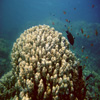 Another cause for extensive fish extinction is the destruction of
coral reefs. This is caused by a combination of causes, including
warming of oceans, damage from fishing tools and a harmful infection of
coral organisms promoted by ocean pollution. It will take hundreds of
thousands of years to restore what is now being destroyed in a few
decades.
Another cause for extensive fish extinction is the destruction of
coral reefs. This is caused by a combination of causes, including
warming of oceans, damage from fishing tools and a harmful infection of
coral organisms promoted by ocean pollution. It will take hundreds of
thousands of years to restore what is now being destroyed in a few
decades.Just as each species is unique," write Beverly and Stephen Stearns, "so is each extinction.the causes for each are varied — some subtle and complex, others obvious and simple".Beverly Peterson Stearns is a freelance writer and journalist. Stephen C. Stearns is professor of zoology at the University of Basel in Switzerland.Extinction of a species may come suddenly when an otherwise healthy species is wiped out completely, as when toxic pollution renders its entire habitat unlivable; or may occur gradually over thousands or millions of years, such as when a species gradually loses out in competition for food to better adapted competitors.Assessing the relative importance of genetic factors compared to environmental ones as the causes of extinction has been compared to the nature-nurture debate. 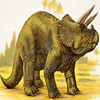 In the model of Newman and Roberts (1995) the level of the environmental stress is represented by a single number which is chosen independently at random from some distribution at each time step.Each species possesses some threshold tolerance for stress which is high in species that are well able to withstand stress and vice versa.Extinction takes place if at any time step numerical value of the stress level exceeds a species' tolerance for stress. Thus large stresses(eg. sea level change,bolide impact) can give rise to large mass extinction. In the model of Newman and Roberts (1995) the level of the environmental stress is represented by a single number which is chosen independently at random from some distribution at each time step.Each species possesses some threshold tolerance for stress which is high in species that are well able to withstand stress and vice versa.Extinction takes place if at any time step numerical value of the stress level exceeds a species' tolerance for stress. Thus large stresses(eg. sea level change,bolide impact) can give rise to large mass extinction.The asteroid collision theory, which was brought to wide attention in 1980 by Walter Alvarez and colleagues, links the extinction event at the end of the Cretaceous period to a bolide impact approximately 65.5 million years ago. Alvarez et al. proposed that a sudden increase in iridium levels, recorded around the world in the period's rock stratum, was direct evidence of the impact. The bulk of the evidence now suggests that a 5 to 15 kilometer wide bolide hit in the vicinity of the Yucatán Peninsula, creating the 170 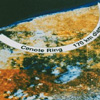 kilometers wide kilometers wideand unnatural drop in Earth's atmospheric temperature, while others claim that it would have instead created an unusual heat wave. As per another theory the Deccan Traps could have caused extinction through several mechanisms, including the release of dust and sulphuric aerosols into the air which might have blocked sunlight and thereby reducing photosynthesis in plants. The Deccan Traps formed between 60 and 68 million years ago, at the end of the Cretaceous period. The bulk of the volcanic eruption occurred at the Western Ghats (near Mumbai) some 66 million years ago. This series of eruptions may have lasted fewer than 30,000 years in total. The gases released in the process may have played a role in the Cretaceous–Tertiary extinction event, which included the extinction of the dinosaurs. In addition, Deccan Trap volcanism might have resulted in carbon dioxide emissions which would have increased the greenhouse effect when the dust and aerosols cleared from the atmosphere.Before the mass extinction of the dinosaurs, the release of volcanic gasses during the formation of the Deccan traps "contributed to an apparently massive global warming. Some data point to an average rise in temperature of 8 °C (14 °F) in the last half million years before the impact [at Chicxulub]." However, besides obvious environmental causes there could be other reasons behind extinction.Population genetics and demographic phenomena affect the evolution, and therefore the risk of extinction, of species. A diverse or "deep" gene pool gives a population a higher chance of surviving an adverse change in conditions. Effects that cause or reward a loss in genetic diversity can increase the chances of extinction of a species. Purebred, naturally evolved, region specific wild species can be threatened with extinction in a big way through the process of genetic pollution - i.e., uncontrolled hybridization, introgression genetic swamping which leads to homogenization or replacement of local genotypes as a result of a numerical and/or fitness advantage of the introduced plant or animal. Nonnative species can bring about a form of extinction of native plants and animals by hybridization and introgression, either through purposeful introduction by humans or through habitat modification, bringing previously isolated species into contact. 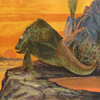 Coming back to the environmental reasons,the degradation of a species' habitat may alter the fitness landscape to such an extent that the species is no longer able to survive and becomes extinct. This may occur by direct effects, such as the environment becoming toxic, or indirectly, by limiting a species' ability to compete effectively for diminished resources or against new competitor species. Coming back to the environmental reasons,the degradation of a species' habitat may alter the fitness landscape to such an extent that the species is no longer able to survive and becomes extinct. This may occur by direct effects, such as the environment becoming toxic, or indirectly, by limiting a species' ability to compete effectively for diminished resources or against new competitor species.Habitat degradation through toxicity can kill off a species very rapidly, by killing all living members through contamination or sterilizing them. It can also occur over longer periods at lower toxicity levels by affecting life span, reproductive capacity, or competitiveness. Habitat degradation can also take the form of a physical destruction of niche habitats. The widespread destruction of tropical rainforests and replacement with open pastureland is widely cited as an example of this;elimination of the dense forest eliminated the infrastructure needed by many species to survive. Diminished resources or introduction of new competitor species also often accompany habitat degradation. Global warming has allowed some species to expand their range, bringing unwelcome competition to other species that previously occupied that area. Sometimes these new competitors are predators and directly affect prey species, while at other times they may merely outcompete vulnerable species for limited resources. Vital resources including water and food can also be limited during habitat degradation, leading to extinction. 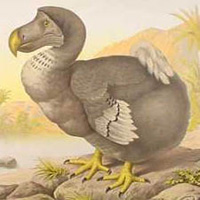 The world environmental situation is likely to be further aggravated by the increasingly rapid, large scale global extinction of species. It occurred in the 20th century at a rate that was a thousand times higher than the average rate during the preceding 65 million years. This is likely to destabilize various ecosystems including agricultural systems. No one knows what will be the result of this extremely rapid extinction rate. What is known, for sure, is that the world ecological system has been kept in balance through a very complex and multifacetted interaction between a huge number of species. This rapid extinction is therefore likely to precitate collapses of ecolosystems at a global scale, threatening food supplies to hundreds of millions of people. This ecological prediction does not take into consideration the effects of global warming which will further aggravate the situation. The world environmental situation is likely to be further aggravated by the increasingly rapid, large scale global extinction of species. It occurred in the 20th century at a rate that was a thousand times higher than the average rate during the preceding 65 million years. This is likely to destabilize various ecosystems including agricultural systems. No one knows what will be the result of this extremely rapid extinction rate. What is known, for sure, is that the world ecological system has been kept in balance through a very complex and multifacetted interaction between a huge number of species. This rapid extinction is therefore likely to precitate collapses of ecolosystems at a global scale, threatening food supplies to hundreds of millions of people. This ecological prediction does not take into consideration the effects of global warming which will further aggravate the situation. |
•
Home •
FEATURE •
INTERVIEW •
NEWS •
POLICY •
UPDATES •
REPORTS / INTERNATIONAL NEWS •